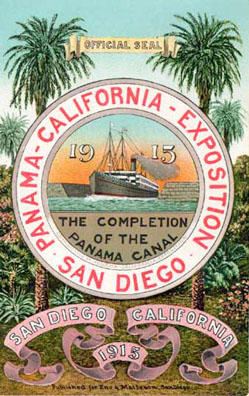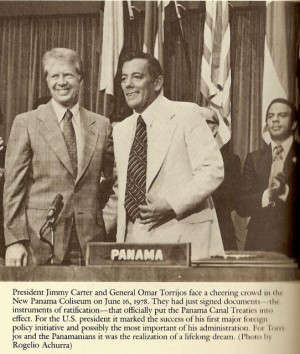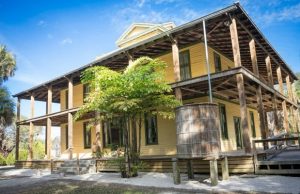How Far Has Panama Come?

The Peaceful Country
The Latin American countries are often associated with periods of intense upheaval, political corruption, and violent revolutions. Progress and democratic process was laborious and only accomplished with enormous struggle. Panama, however, has never had a prolonged period of bloodshed and violence. Its history is one of usually dissolving its disputes by peaceful means and taking a pragmatic look at the future.
Panama’s Early Independence
Formerly a region of Colombia, Panama stated its independence from its mother country in 1903. Its proclamation was stimulated by a three hundred year old dream to build a canal through the narrow isthmus, shortening the journey for inter-continental traffic, and creating a cheaper trade route for the shipping industry. In 1819, the Spanish government formally authorized the building of a canal, but no action was taken, and interest eventually faded.
The French first undertook the project in 1881. After examining a proposal set forth by Ferdinand Marie de Lesseps, the builder of the Suez Canal, the French government authorized the construction of a sea-level canal through Panama and a company to undertake the construction.

For eight years, the company struggled with obstacles they had not previously considered. The Pacific tidal range was twenty feet, whereas the Atlantic range was only one foot. The labor was done by primarily by hand, making navigation slow and cumbersome. Workers were often plagued with malaria, yellow fever, and other tropical diseases. In 1889, they abandoned the project and offered to sell it to the United States.
The Little Rebellion
When the United States accepted the project, it also accepted a commitment to protect the sovereign rights of the Panama people. The initial proposal, presented to the Colombian government, was met with rejection. Already unhappy with their ties to Colombia, the citizens of Panama chose to stage a rebellion and declare themselves an independent country.
It was probably the most bloodless rebellion in history. Siding with the Panama people, the United States blocked rail transportation into Colombia and sent a few warships into the zone. With the jungles of the Darien Strait their only recourse to combating the insurrection, Colombia relinquished its claims to Panama, allowing it to be recognized as an independent country. During the three day blockade, a few shots were fired, but there were no deaths or injuries.
The Beginnings of Economic Stability
 The United States compensated France forty million dollars for their abandoned project, and ten million dollars to the Panama government for the right to build a canal on a thirteen mile strip. The preparatory labor included paving the roads, the introduction of screened windows and the installation of city-wide water systems to prevent water stagnation and contamination. Swamps were drained, and insect breeding areas were covered with oil and larvicide. After two years of sanitation efforts, mosquito borne diseases were nearly eliminated. Despite these efforts however, 5,600 workers died of diseases and accidents during the construction phase of the canal.
The United States compensated France forty million dollars for their abandoned project, and ten million dollars to the Panama government for the right to build a canal on a thirteen mile strip. The preparatory labor included paving the roads, the introduction of screened windows and the installation of city-wide water systems to prevent water stagnation and contamination. Swamps were drained, and insect breeding areas were covered with oil and larvicide. After two years of sanitation efforts, mosquito borne diseases were nearly eliminated. Despite these efforts however, 5,600 workers died of diseases and accidents during the construction phase of the canal.
The canal formally opened on August 15, 1914. The United States had spent 374 million dollars on its construction, including building what was then, the largest dam in the world, a massive, sophisticated electrical system for powering and controlling the flow of water into the locks and spillways, and a number of housing facilities for workers and guards.
An Issue of Ownership
The building of the Panama Canal was a spectacular success. The project was declared one of the seven wonders of the modern world. The city of Panama experienced a quality of life found in few other places within the Central American network. However, by the early 1960’s, many of the Panama citizens felt the United States had profited from their engineering feat long enough and the canal rightfully belonged to Panama. A series of student demonstrations were staged, one of which involved the deaths of twenty Panamanians and three U.S. soldiers.
 In 1974, negotiations began for the settlement of the issue. The Torrijos-Carter Treaty was signed in 1977 by U.S. President, Jimmy Carter and Omar Torrijos, the leader of Panama, granting Panama full control over the canal on conditions of neutrality. On December 31, 1999, Panama assumed full command over the waterway. The canal remains one of Panama’s primary sources of revenue.
In 1974, negotiations began for the settlement of the issue. The Torrijos-Carter Treaty was signed in 1977 by U.S. President, Jimmy Carter and Omar Torrijos, the leader of Panama, granting Panama full control over the canal on conditions of neutrality. On December 31, 1999, Panama assumed full command over the waterway. The canal remains one of Panama’s primary sources of revenue.
Panama’s One Black Eye
Panama’s history has been one of diplomacy and negotiation. Its strong ties with the United States have lasted over a hundred years. However, from the civil unrest and rebellion that spread through many of the Central American countries, emerged an ambitious leader.
Manuel Antonio Noriega Moreno began his rise to power as a career soldier involved with the CIA. Throughout the 1970’s and 1980’s, he aided U.S. backed guerillas in Nicaragua, and set up listening posts in Panama, despite the canal’s declaration of neutrality.
Noriega’s association with the CIA allowed him to build almost unlimited power within his country as he skillfully manipulated government agencies to support what appeared to be the mutual benefit of both countries. Noriega, however, was skilled at working both sides of the fence.
Although he outwardly supported Panama leader, Omar Torrijos, when Torrijos died in a 1981 plane crash, it was rumored Noriega had planted a bomb.
In 1985, he allowed the first presidential elections in sixteen years to be held in Panama. However, when it became clear he would not win, Noriega halted the count. His opposition still won by a slim margin, although analysts concur that if the votes had all been counted, PRD candidate, Nicolas Ardito Barletta Vallarino would have won by a landslide. In 1989, he was again accused of rigging the elections.
Noriega’s career was embellished with the grisly murders of outspoken opponents, whose deaths were never fully proven to be connected to him. The highly criticized 1989 elections resulted in deteriorating relationships with the U.S., and a statement of war.
On December 20, 1989, the U.S. invaded Panama. Five days later, Noriega surrendered. He was charged with racketeering, money laundering, drug trafficking, and absentee murder.
Panama Today
Panama has recovered from the social conflicts that had once made Central America a hotbed of politics. It is now the fastest growing country in Central America with one of the most robust economies. The conversion to the dollar has favored its energetic growth, with investors from the United States, Canada, and the European Union.
Much of Panama’s growth has been credited to sound business policies, which include a planned expansion of the canal that remains one of Panama’s greatest sources of income, and the Colon Free Zone, which supports national and international commerce, ranging from transportation to commercial activities.
Transportation facilities for Panama include the Pan-American highway, which extends into Alaska, the Caribbean to Pacific highway, six airports, five ocean ports with modernized cargo handling facilities, a trans-isthmus railway and the canal, which annually passes 12,000 merchant ships from 75 different countries.
With more than 120 international banks, Panama has become a crucial regional hub, with a diversified ownership structure, low reliance on wholesale funding and high capital and liquidity rates. Panama’s open policies have made investment easy for both individuals and enterprises.
No other country in Central America has changed so quickly. From a small, struggling region breaking away from its parent country, to an independent voice speaking out for what is best for Panama, it has shown itself to be resilient, imaginative, and creative. An investment in Panama is an investment in a future filled with promises of greater things to come.
Up Next

7 of the Top Places U.S. Expats Are Living in Latin America (and Why)

Central America's Best Real Estate Buy

The World’s Top 10 Best Places to Put Your Money

Nosara, Costa Rica Everything You Need to Know. I Mean Everything.
Imagine a small, beautiful beach town surrounded by jungle and wildlife with a peaceful multicultural community and many of the comforts of home. That place, named by National Geographic as one of the top surf …
(Read It)
Panama City, Panama Real Estate Market Update
Today we have a guest post written by Kent Davis, owner of one of the most successful real estate brokerages in Panama City The Panama City real estate market may have finally taken a turn in …
(Read It)
Top 133 Costa Rica Websites for Expats and Investors
Did you know there are dozens and dozens of great resources on Costa Rica for expats and investors? Sure, we have a ton of resources for Costa Rica on our site, and a whole bunch …
(Read It)
The Truth about Living in Costa Rica: The Good, the Bad, and the Muddy
It's easy to find tons of articles and information out there highlighting all the great benefits of living in Costa Rica. But it's also easy to read those blogs and marketing pieces and think, "Yeah, it …
(Read It)
Why Nosara, Costa Rica Is Not Your Average Surfing Town
A deeper look at Nosara and its history will quickly reveal that this long-time mecca for surfing enthusiasts offers so much more than just the sand and sea. The increasing interest in the area as a …
(Read It)
Expats Are Still Falling in Love with Nosara and Here’s Why
What was once the up-and-coming expat haven of Nosara, Costa Rica, has blossomed into one of Costa Rica's most established expat communities that continues to be ranked near the top of the list of most desirable destinations in the Latin …
(Read It)












